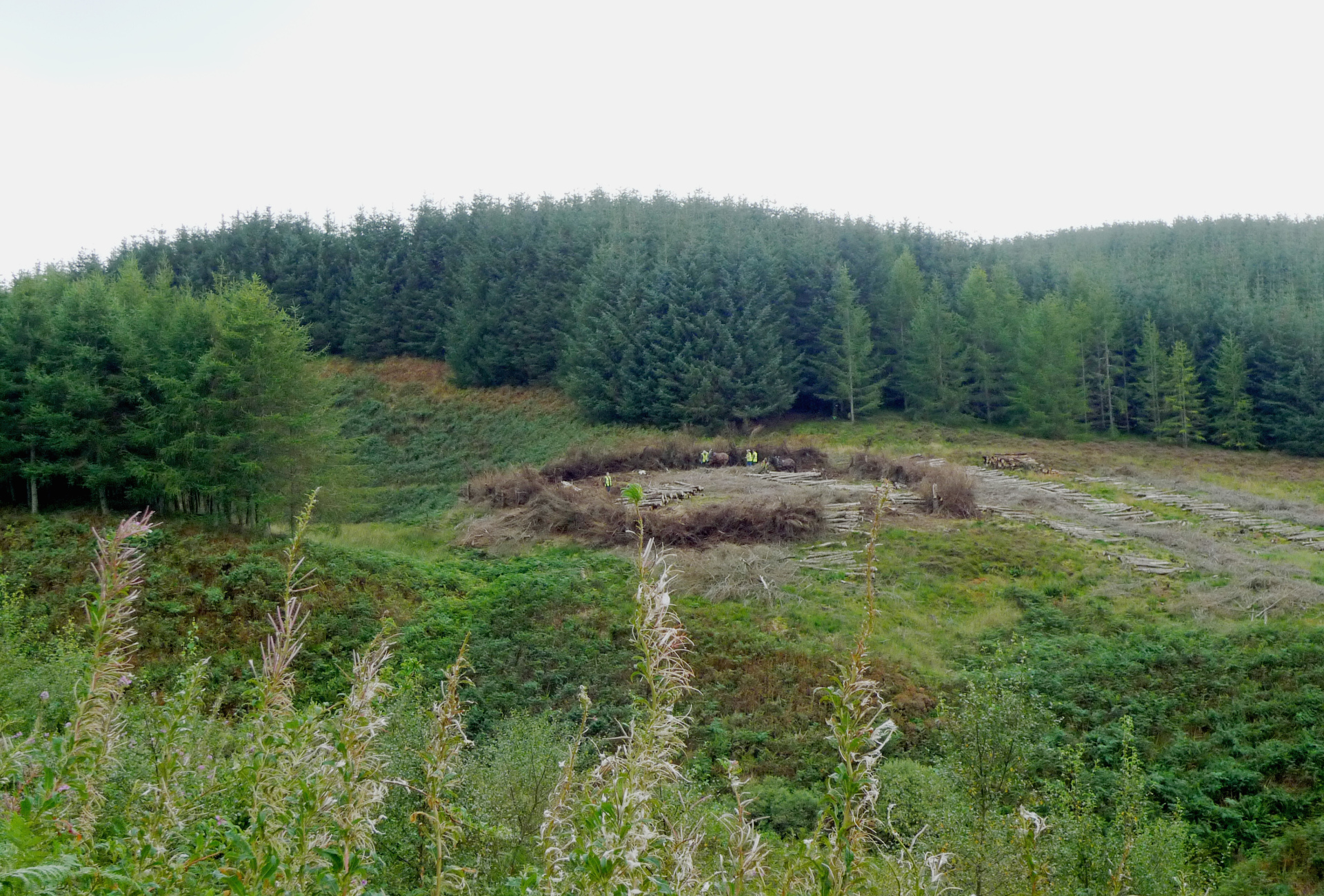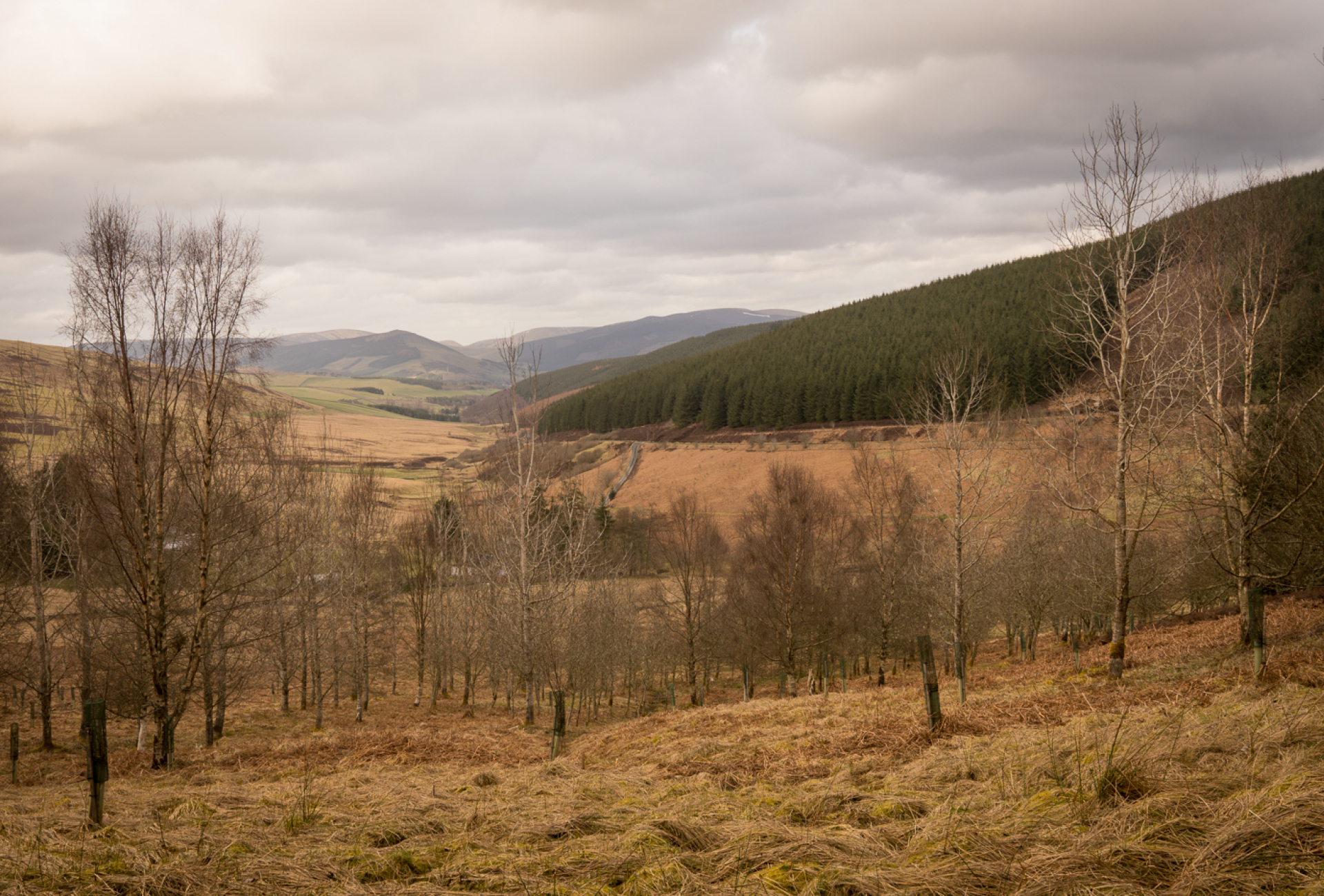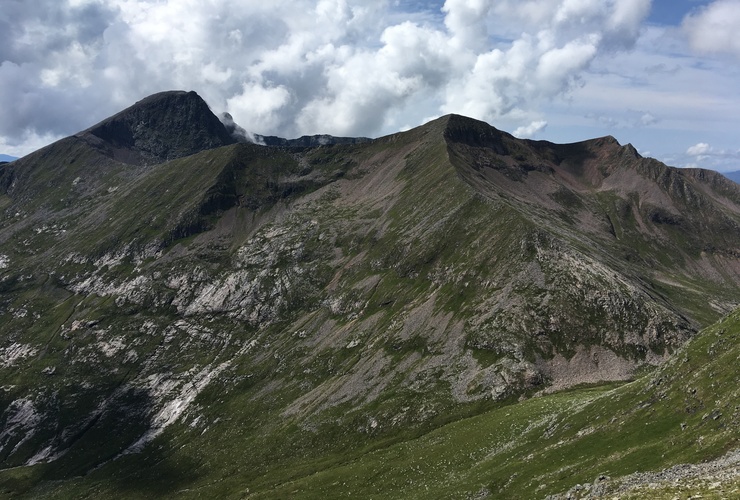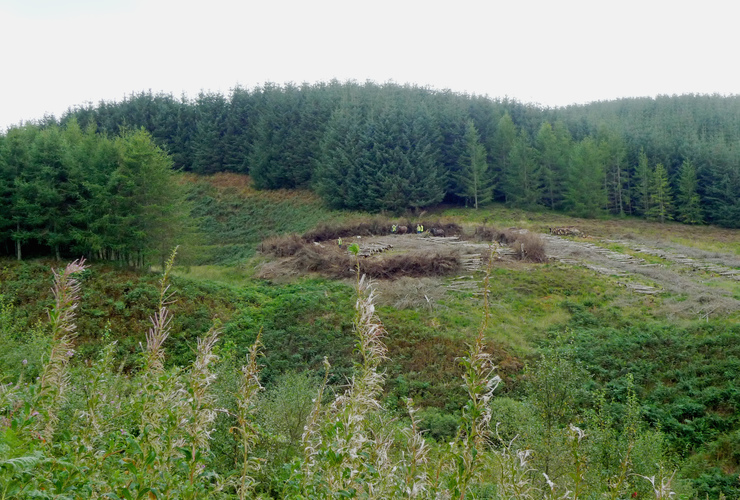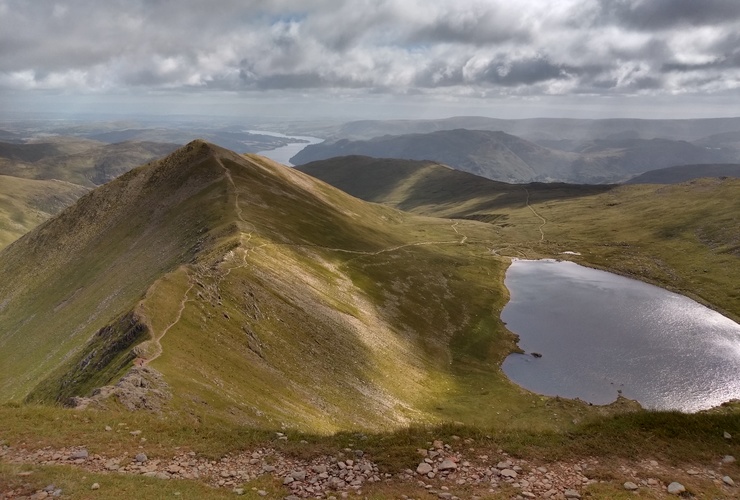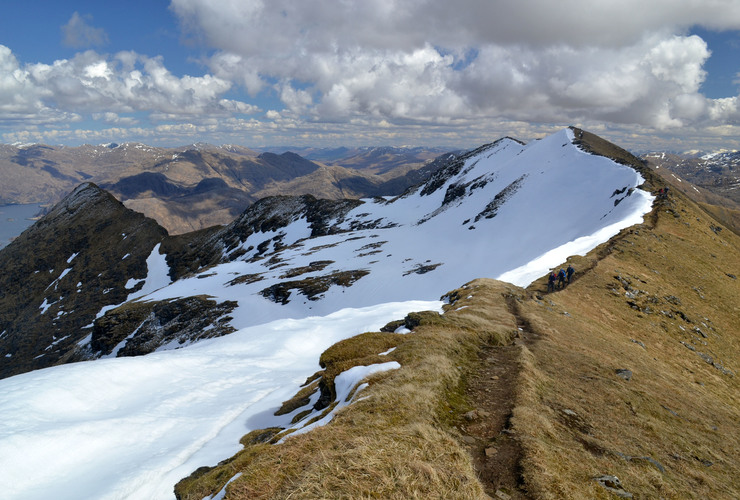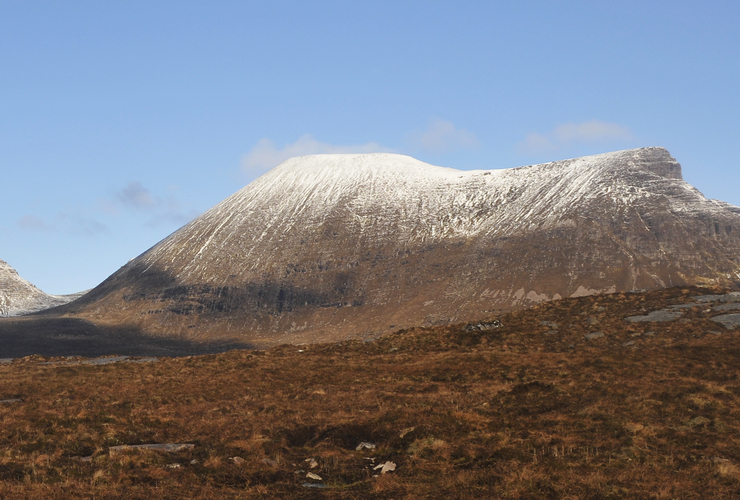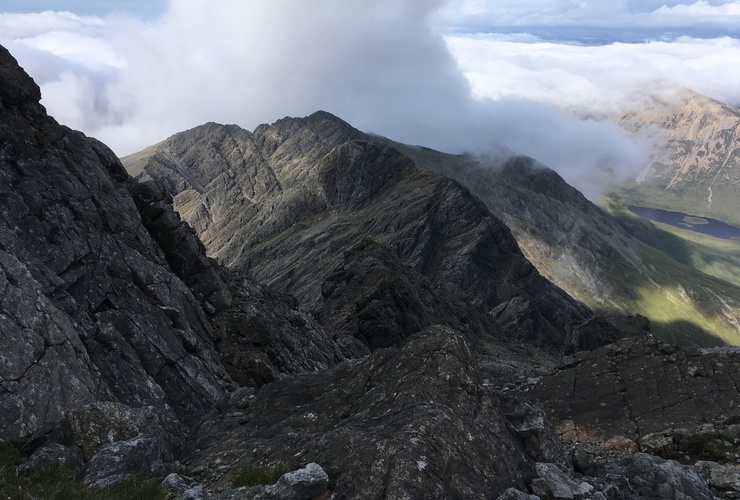Restoring habitats
- We’re continuing to fell non-native conifers in the plantation we inherited with Glenlude, as part of our work to replant native species and create a mosaic of native habitats across the property.
- A Statutory Plant Health Notice was served by Scottish Forestry in August regarding 10 hectares of larch infected with phytophthora ramorum. This sudden development will allow us to plant a large number of broadleaved trees in their place and advance the rewilding project significantly.
- We are seeing natural woodland regeneration across Glenlude now, with rowan, birch and oak saplings appearing. This is increasing biodiversity; the team recorded 32 species of breeding birds this year, and more than 14 adders were recorded in one day’s snake survey.
- 1,020 native saplings were planted in 2021.
- After a local volunteer discovered the Northern Brown Argus butterfly on site in 2019, we have been surveying the foodplant rockrose for signs of larval eggs. In 2021 we undertook habitat management in the areas this plant occurs, cutting back bracken and heather. Seeds were collected to grow on in the nursery, which have successfully germinated. In consultation with Butterfly Conservation, we will eventually plant these out to increase butterfly habitat.
Working with communities
- Over 30 weekly work parties were held in 2021:
- 31 regular volunteers gave over 130 days of conservation work. - Volunteers planted over 850 birch, willow and aspen seedlings within a large brash hedge enclosure in 2021, supported by funding from Suez Communities Trust. Brash hedges use felled conifer branches to create a natural herbivore barrier, protecting seedlings while offering a habitat for birds and insects, and slowly biodegrading over several years (after which point the seedlings no longer need protection).
- Over 100 students from George Watson’s College visited Glenlude for nine days in May/June, helping to remove old fences and bracken, plant trees, dig ditches, returf the old stell, and repair brash hedges. This was the first school group to return to Glenlude since 2020, when 44 people from groups including Borders College, Peebles High School, the Green Team, and the South Scotland Golden Eagle Project visited to contribute to Glenlude’s conservation work.
Collaborating with partners
- Two heavy horses from Teamwork Horse Logging returned in March to move and stack more felled spruce timber, building on work they began in 2020. This has helped clear the ground for native tree planting. Using horses over heavy machinery has a much lower carbon and soil impact.
- We’re working with RSPB to create and improve habitat for birds and other species. As well as taking part in a project to improve black grouse habitat across the south of Scotland, we are working with RSPB and Traquair House Charitable Trust on a forestry project which aims to achieve collaborative, landscape-level impact for native woodland.
- We worked with Royal Botanical Gardens Edinburgh and Forest Research to make a film about the importance of sustainable forest management for epiphyte biodiversity (epiphytes are organisms that grow on the surface of other plants, such as lichens). The film has been created to raise awareness amongst land managers and is due for release in 2022.
- We partnered with the Peatland Officer at the Tweed Forum in August to assess the peatland at Glenlude. The findings will help inform how we protect and enhance this habitat going forward.
2022 focus
- Launch the all-access area project in May 2022. This will include building an easily accessible gathering shelter allowing us to welcome people with a diverse range of abilities to Glenlude, and introduce activities such as green woodworking. The project will also include a multi-faith area.
- Continue to connect with our volunteer and charitable groups, many of whom have been unable to come on site over the past two years due to Covid.
- Replanting the clear felled areas once the larch timber is extracted, with the help of volunteers and contractors.
- Start planning the creation of an all-ability path on the eastern edge of the property.
